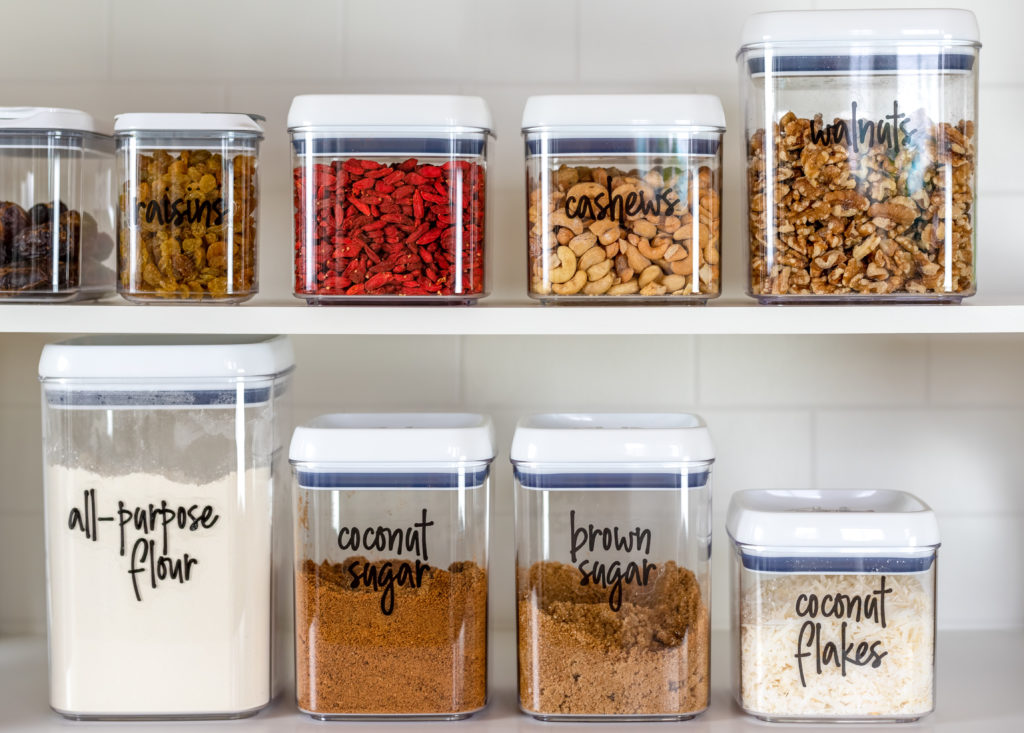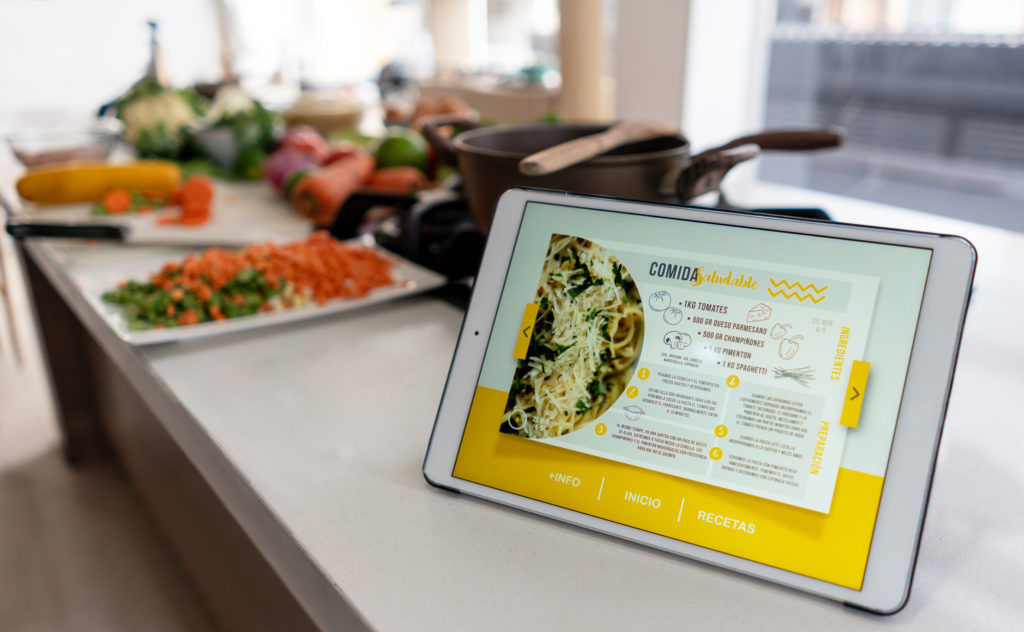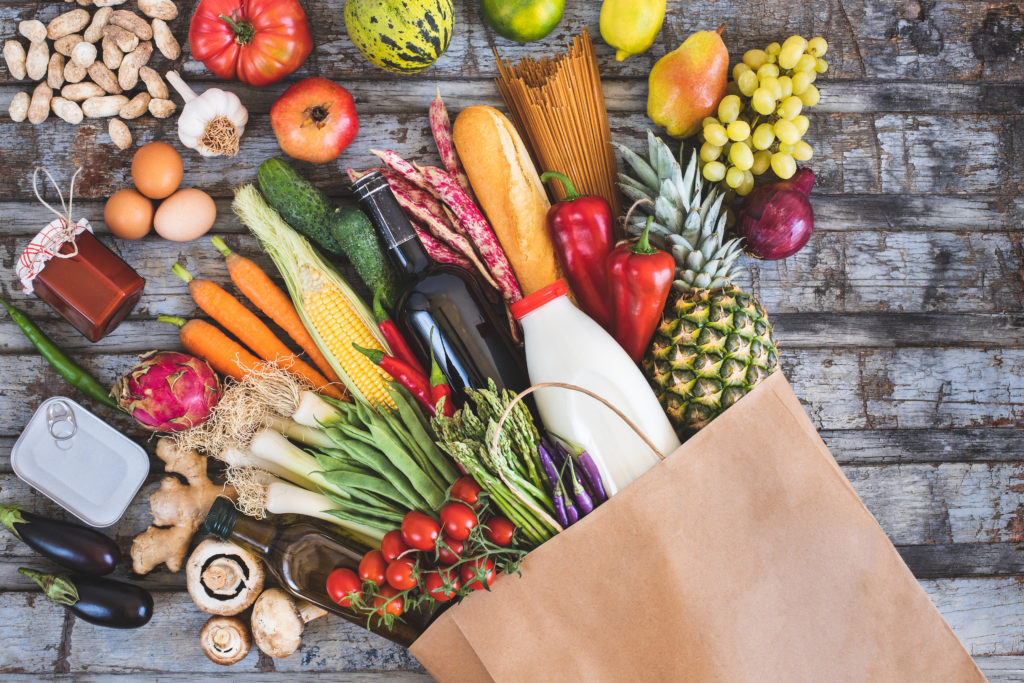Grocery shopping is one of those things we take for granted. It seems easy enough. Buy food. Believe it or not, though, there’s a bit of a science to getting groceries. If you aren’t used to it, you’re probably going to end up getting a lot of junk food or frozen meals, which is fine for the short term, but you shouldn’t be living on microwave macaroni and chimichangas forever.
Stock up on the basics
There are certain foods you always want to have on hand. Even if you don’t use them very often, you’ll still want them to fall back on. They make up a lot of the bases for most recipes, and it will be a pain in the butt to buy a whole bag or bottle of them for a single recipe.
The nice thing about the basics is you probably won’t have to buy them very often, but they will be super handy to have in your kitchen at any given moment.
Spices
The most obvious pantry staple will be spices – things like salt and pepper, garlic powder, onion powder, cumin, cinnamon, etc. Spices are going to be super nice to have on hand when you’re spontaneously cooking and want to liven up an otherwise bland meal.
Having a good variety of spices in a drawer or rack will make feeding yourself so much easier. Obviously, the exact spices you’ll want on hand are going to differ depending on the type of food you eat most often. If you like making Asian foods a lot, sesame seeds and chili powder will be more important than basil or oregano, for instance.
Having more spices on hand will allow you to experiment with cooking more and even encourage you to expand your palate. Plus, it’s just really nice to look at a dish you want to make and be able to eliminate half the ingredient list because you’ve already got the basic seasonings at home.
Baking staples
Even if you aren’t a baker, there are a few things in the baking aisle you’ll want to keep stocked up in your pantry next time you go grocery shopping. White sugar and flour are used in many different recipes outside of just cakes, cookies, and breads. Brown sugar is used to make tons of different sauces for dinners, too, and it never hurts to keep baking powder on hand either.
Baking ingredients are usually super versatile in their uses, even helping get out stains (thank you, vinegar and baking soda)!
Most baking staples won’t go bad quickly, so you won’t have to replenish or refresh them very often unless you do a lot of cooking/ baking. Even if you don’t have to replenish them often, they’re also usually pretty cheap.
I’m not sure whether these count as baking staples, but having various oils and sauces is also a good idea. Things like vegetable/ olive oil, soy sauce, butter, tomato paste, tomato sauce, honey, peanut butter, sesame oil, etc. If you’re not sure what to get, start with some of your favorite recipes and take a look at what they call for.
Non-perishables
Uncooked pastas, dry lentils, beans, canned foods. Think about things you might need if you had to bunker down in your home for a while. These are more things you probably won’t have to buy often but will be good to have on hand, especially in case of emergency.
Depending on where you live, these are the kinds of foods you may depend on if you run out of power for an extended period or get trapped in your home for whatever reason. Dried meat and fruit, nuts, even some non-dairy milks can be shelf-stable for almost a year.

Plan a few meals
The easiest way to direct your grocery shopping is to have a few meals in mind when you’re making up your list and meal plan for the week. If you have a few things you want to make, you don’t have to think too hard about what to fill up your fridge with.
Breakfast
If you have a hard time getting going in the morning and like sleeping as much as possible, you’ll probably want to get something that is easy to make in the morning for breakfast. Eggs and toast are pretty good; maybe you like rice in the morning, or perhaps you’re more of a smoothie person.
Whatever you end up grabbing, breakfast is usually the easiest and simplest meal to shop for.
Lunches
For lunches, it’s easier to have smaller portions, and they can also be pretty simple to shop for. Honestly, think back to what you had for lunch as a kid. If it’s a balanced meal, then feel free to recreate it. You won’t have to spend too long deciding what you want to eat, and you usually have to get enough to make more than one portion anyway.
Sandwich ingredients are always a good way to go; you may already have half of what you’d need anyway if you’ve already got the basics at home (hello, PB&Js). For a while, I was making lunches that were essentially DIY Lunchables, and it was just deli meat, some cheese curds, a few crackers, cashews, and grapes. They were easy to make, too, because I already had everything from wanting to make sandwiches (but ran out of bread).
Dinners
When I’m grocery shopping, I normally shop for dinner recipes, and I can use leftovers for lunches, snacks, etc. Any ingredients I have leftover from making dinner can also be used for other meals and supplement the basics I already purchased.
Things like ricotta used for lasagna can then be used to make super fluffy ricotta pancakes or be turned into dessert with items already in the pantry.

Perishables
The most money you’ll probably spend when grocery shopping is on the perishable stuff. You’ll be eating it the most, it will go bad the quickest, and it can be the most expensive depending on what you’re getting. (Not so much the produce, but proteins aren’t exactly cheap).
Fruits & veggies
I swear produce goes bad more quickly when you’re the one paying for it so go easy on these. Vegetables tend to last longer than fruits but don’t be like me and buy a bunch of zucchinis only to watch it rot because chipotle sounded better than putting effort into dinner… Again.
Even if produce goes bad quickly, you still probably want to have some on hand for your health or whatever. My advice is to buy what you know you can finish, so you aren’t wasting food and throwing anything out. Throwing out food will make you feel worse than eating vegetables does.
Meats
If you want to keep some raw meat/ poultry on hand, make sure you plan to either cook it quickly or freeze it. Trust me; the freezer is your best friend for meats. That does mean you’ll have to plan out when you’re cooking beforehand so you can thaw out anything frozen ahead of time, though.
I usually have some frozen chicken in my freezer at any given time. It’s nice to bake and slice up for sandwiches, eat on its own, or add to pasta dishes. Ground beef/ turkey isn’t bad to have either for taco nights, meatloaf, etc.
The thing about meat, though, is that it can be expensive. If you’re having trouble figuring out your grocery shopping budget, click here to check out our guide. It can be hard to stick to a budget but blowing your paycheck on takeout and junk food isn’t the best idea.
Snacks
It’s not a bad idea to have some snacks on hand for when you’re peckish but not exactly hungry. It’s even better if you can find some healthier options (or healthy-ish options). I like to keep rice cakes and fruit snacks on hand. Not exactly the greatest things, but they satisfy my sweet tooth at least.
If you give in to temptation a little too easily at the grocery store, it might be a good idea to order your groceries for pickup or delivery. Most big grocers offer curbside pick up now, and you’ll be able to get exactly what you need without having to walk past the chip and candy aisles in your search for rice.
Instacart is a good option for delivery and is a little more timely than curbside pick up if your local grocery store gets slammed with orders.

What tips do you have for grocery shopping?





Tupperware makes refrigerator containers that keep your fruit and vegetables fresh much longer.
https://www.tupperware.com/products/fridgesmart-4-pc-starter-set. I have used mine for years and they work.
[…] a weirdo. I love grocery shopping. I’m so optimistic about who I am when I go grocery shopping. I lie to myself and buy carrots to […]